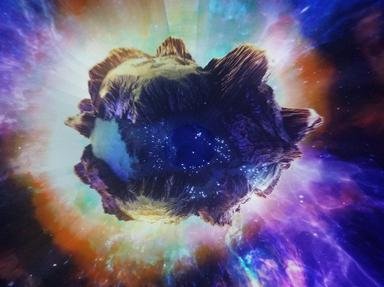Quiz Answer Key and Fun Facts
1. The image of this nebula is simply smokin'! What is the name given to this stogie in the sky?
2. This object is believed to be a protostar that is still in the process of collecting material. What is its nickname?
3. This is a globular cluster known as IC 4499. What do the initials IC stand for?
4. What is the name of this galaxy which looks like a cosmic washing machine?
5. This nebula is named after an item of clothing worn on someone's face. Which of these could it be?
6. This is a variable star found in a constellation known as the poop deck or the stern. Can you identify it?
7. Astronomers must have had a fiesta when they saw this image for the first time. What is this galaxy called?
8. Here we have a picture of a galaxy that was named after the American astronomer who discovered it. What simple name was it given?
9. What did astronomers name these gaseous formations that were viewed by Hubble from within the Eagle Nebula?
10. Hubble captured images of this phenomenon found in a constellation known as the unicorn. Can you identify it?
Source: Author
RedHook13
This quiz was reviewed by FunTrivia editor
rossian before going online.
Any errors found in FunTrivia content are routinely corrected through our feedback system.
